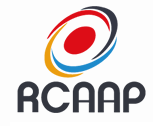Combination of active and inactive yeast and its use as an additive for confined ewe lambs: nutritional parameters
DOI:
https://doi.org/10.5433/1679-0359.2025v46n1p169Keywords:
Prebiotic, Probiotic, Saccharomyces cerevisiae, Sheep, Starch.Abstract
This study aimed to evaluate the effects of adding increasing levels of a combination of active and inactive yeast (Milk Sacc X® - Alltech®, Maringá, Paraná, Brazil, 5.0 x 108 CFU) on the consumption and apparent digestibility of dry matter (DM) and its components, as well as the nitrogen and energy balances of lambs fed high-concentrate diets. Five Dorper x Santa Inês crossbred lambs, averaging an initial weight of 40.40 ± 0.15 kg, were housed in individual metabolic cages. The treatments included five levels of yeast combination—0, 0.15, 0.3, 0.45, and 0.6% of the DM offered in kg animal-1 day-1—blended into a diet with a 20:80 ratio of corn silage to concentrate based on DM. Employing a 5x5 Latin square design, the study involved five animals over five periods, thus creating 25 experimental units. Regression analysis conducted at a significance level of 5% indicated no effects of the treatments on consumption variables; however, there was a significant lack of model fit (LMF), with the average DM consumption being 1343.0 g animal-1 day-1. The treatments also showed no effect on the apparent digestibility variables, which averaged 86.9% for DM. Similarly, the nitrogen balance variables were unaffected by the yeast levels, as indicated by the LMF effect showing that the data did not fit the regression model; the average retained nitrogen was 45.3 g animal-1 day-1. Energy measurements, including gross energy (GE) ingested, digestible energy (DE), metabolizable energy (ME), and metabolizability, did not fit the regression model, with averages of 5549, 2685, 2504 kcal animal-1 day-1, and 42.6%, respectively. Neither fecal nor urinary GE excretion was influenced by the treatments. In conclusion, the combination of active and inactive yeast does not alter the intake, nutrient digestibility, nitrogen, or energy balance of lambs fed a high-concentrate diet.
Downloads
References
Alzahal, O., Dionissopoulos, L., Laarman, A. H., Walker, N., & McBride, B. W. (2014). Active dry Saccharomyces cerevisiae can alleviate the effect of subacute ruminal acidosis in lactating dairy cows. Journal of Dairy Science, 97(12), 7751-7763. doi: 10.3168/jds.2014-8212
Amin, A. B., & Mao, S. (2021). Influence of yeast on rumen fermentation, growth performance and quality of products in ruminants: a review. Animal Nutrition, 7(1), 31-41. doi: 10.1016/j.aninu.2020.10.005
Anadón, A., Ares, I., Martínez-Larrañaga, M. R., & Martínez, M. A. (2019). Prebiotics and probiotics in feed and animal health. In Gupta, R., Srivastava, A., & Lall, R. (Eds.), Nutraceuticals in Veterinary Medicine (pp 261-285). Springer, Cham.
Araújo, L. D. F., Dias, M. V. C., Brito, E. D., & Oliveira, S., Jr. (2009). Enriquecimento proteico de alimentos por levedura em fermentação semissólida: alternativa na alimentação animal. Revista Tecnologia & Ciência Agropecuária, 3(3), 47-53.
Association Official Analytical Chemists (2016). Official methods of analysis (20nd ed.). AOAC.
Bach, A., Guasch, I., Elcoso, G., Chaucheyras-Durand, F., Castex, M., Fàbregas, F. E., Garcia-Fruitos, E., & Aris, A. (2018). Changes in gene expression in the rumen and colon epithelia during the dry period through lactation of dairy cows and effects of live yeast supplementation. Journal of Dairy Science, 101(3), 2631-2640. doi: 10.3168/jds.2017-13212
Bach, A., López-García, A., González-Recio, O., Elcoso, G., Fàbregas, F., Chaucheyras-Durand, F., & Castex, M. (2019). Changes in the rumen and colon microbiota and effects of live yeast dietary supplementation during the transition from the dry period to lactation of dairy cows. Journal of Dairy Science, 102(7), 6180-6198. doi: 10.3168/jds.2018-16105
Blaxter, K. L., & Clapperton, J. L. (1965). Prediction of the amount of methane produced by ruminants. British Journal of Nutrition, 19(1-2), 511-522. doi: 10.1079/BJN19650046
Chaucheyras-Durand, F., Walker, N. D., & Bach, A. (2008). Effects of active dry yeasts on the rumen microbial ecosystem: Past, present and future. Animal Feed Science and Technology, 145(1-4), 5-26. doi: 10.1016/j.anifeedsci.2007.04.019
Detmann, E., Souza, M. A., & Valadares, S. C., Fº. (2012). Métodos para análise de alimentos. Suprema.
Elghandour, M. M. Y., Tan, Z. L., Abu Hafsa, S. H., Adegbeye, M. J., Greiner, R., Ugbogu, E. A., Monroy, C., & Salem, A. Z. M. (2019). Saccharomyces cerevisiae as a probiotic feed additive to non and pseudoâ€ruminant feeding: a review. Journal of Applied Microbiology, 128(3), 658-674. doi: 10.1111/jam.14416
Fomenky, B. E., Chiquette, J., Bissonnette, N., Talbot, G., Chouinard, P. Y., & Ibeagha-Awemu, E. M. (2017). Impact of Saccharomyces cerevisiae boulardii CNCMI-1079 and Lactobacillus acidophilus BT1386 on total lactobacilli population in the gastrointestinal tract and colon histomorphology of Holstein dairy calves. Animal Feed Science and Technology, 234, 151-161. doi: 10.1016/j.anifeedsci.2017.08.019
Fonty, G., & Chaucheyras-Durand, F. (2006). Effects and modes of action of live yeasts in the rumen. Biologia, 61(6), 741-750. doi: 10.2478/s11756-006-0151-4
Fuller, R. (1992). The effect of probiotics on the gut micro-ecology of farm animals. In Wood, B. J. B. (Ed.), The Lactic Acid Bacteria Vol. 1 (pp.171-192). Springer, Boston, MA.
Garcia-Diaz, T., Ferriani-Branco, A., Jacovaci, F. A., Cabreira-Jobim, C., Bolson, D. C., & Pratti-Daniel, J. L. (2018). Inclusion of live yeast and mannan-oligosaccharides in high grain-based diets for sheep: ruminal parameters, inflammatory response and rumen morphology. PLoS One, 13(2), e0193313. doi: 10.1371/journal.pone.0193313
Gibson, G. R., Hutkins, R. W., Sanders, M. E., Prescott, S. L., Reimer, R. A., Salminen, S. J., Scott, K., Stanton, C., Swanson, K. S., Cani, P. D., Verbeke, K., & Reid, G. (2017). The International Scientific Association for Probiotics and Prebiotics (ISAPP) consensus statement on the definition and scope of prebiotics. Nature Reviews: Gastroenterology & Hepatology, 14(8), 491-502. doi: 10.1038/nrgastro.2017.75
Hall, M. B. (2000). Calculation of non-structural carbohydrate content of feeds that contain non-protein nitrogen. (Bulletin, 339). University of Florida.
Hristov, A. N., Varga, G., Cassidy, T., Long, M., Heyler, K., Karnati, S. A., Corl, B., Hovde, C. J., & Yoon, I. (2010). Effect of Saccharomyces cerevisiae fermentation product on ruminal fermentation and nutrient utilization in dairy cows. Journal of Dairy Science, 93(2), 682-692. doi: 10.3168/jds.2009-2379
Levene, H. (1960). Robust tests for equality of variances. In I. Olkin (Ed.), Contributions to probability and statistics; essays in honor of harold hotelling (pp. 278-292). Redwood City, CA.
Li, J., Li, D. F., Xing, J. J., Cheng, Z. B., & Lai, C. H. (2006). Effects of b-glucan extracted from Saccharomyces cerevisiae on growth performance and immunological and somatotropic responses of pigs challenged with Escherichia coli lipopolysaccharide. Journal of Animal Science, 84(9), 2374-2381. doi: 10.2527/jas.2004-541
Licitra, G., Hernandez, T. M., & Van Soest, P. J. (1996). Standardization of procedures for nitrogen fractionation of ruminant feeds. Animal Feed Science and Technology, 57(4), 347-358. doi: 10.1016/0377-8401(95)00837-3
Malekkhahi, M., Tahmasbi, A. M., Naserian, A. A., Danesh-Mesgaran, M., Kleen, J. L., Alzahal, O., & Ghaffari, M. H. (2016). Effects of supplementation of active dried yeast and malate during sub-acute ruminal acidosis on rumen fermentation, microbial population, selected blood metabolites, and milk production in dairy cows. Animal Feed Science and Technology, 213, 29-43. doi: 10.1016/j.anifeedsci.2015.12.018
Martin, A. K., & Blaxter, K. L. (1965). The energy cost of urea synthesis in sheep. In K. L. Blaxter (Ed.). Energy metabolism (pp. 83-91). London.
Maynard, L. A., Loosli, J. K., Hintz, H. F., & Warner, R. G. (1984). Nutrição animal (3a ed.). Freitas Bastos S.A.
National Research Council (2007). Nutrient requirements of small ruminants. National Academy Press.
Ogunade, I. M., Lay, J., Andries, K., McManus, C. J., & Bebe, F. (2019). Effects of live yeast on differential genetic and functional attributes of rumen microbiota in beef cattle. Journal of Animal Science and Biotechnology, 10(1), 1-7. doi: 10.1186/s40104-019-0378-x
Rodrigues, G. R. D., Schultz, E. B., Siqueira, M. T. S., Fonseca, A. L., Oliveira, M. R., Silva, D. A. P., & Macedo, G. L., Jr. (2021). Use of active and inactive yeasts in lamb diets: intake, digestibility, and metabolism. Veterinária Notícias, 27(2), 19-43.
Sales, J. (2011). Effects of Saccharomyces cerevisiae supplementation on ruminal parameters, nutrient digestibility and growth in sheep: A meta-analysis. Small Ruminant Research, 100(1), 19-29. doi: 10.1016/j.smallrumres.2011.05.012
Shapiro, S. S., & Wilk, M. B. (1965). An analysis of variance test for normality. Biometrika, 52(3/4), 591-609. doi: 10.1093/biomet/52.3-4.591
Silva, D. J., & Queiroz, A. C. (2002). Análise de alimentos (métodos químicos e biológicos) (2a ed.). UFV. Imp. Univ.
Silva, J. F. C., & Leão, M. I. (1979). Fundamentos de nutrição de ruminantes. Livroceres.
Siqueira, M. T. S., Ruela, P. A. C., Oliveira, K. A., Paula Silva, D. A. de, Sousa, L. F., & Macedo, G. D. L., Jr. (2020). Avaliação dos parâmetros nutricionais e metabólicos de borregas alimentadas com leveduras na ração. Caderno de Ciências Agrárias, 12, 1-10. doi: 10.35699/2447-6218.2020.23902
Sniffen, C. J., O'Connor, J. D., Van Soest, P. J., Fox, D. G., & Russell, J. B. (1992). A net carbohydrate and protein system for evaluating cattle diets: II. Carbohydrate and protein availability. Journal of Animal Science, 70(11), 3562-3577. doi: 10.2527/1992.70113562x
Song, B., Wu, T., You, P., Wang, H., Burke, J. L., Kang, K., Yu, W., Wang, M., Li, B., He1, Y., Huo, Q., Li, C., Tian, W., Li, R., Li, J., Wang, C., & Sun, X. (2021). Dietary supplementation of yeast culture into pelleted total mixed rations improves the growth performance of fattening lambs. Frontiers in Veterinary Science, 8, 657816. doi: 10.3389/fvets.2021.657816
Street, J. C., & Butcher, J. E., & Harris L. E. (1964). Estimating urine energy from urine nitrogen. Journal of Animal Science, 23(4), 1039-1041. doi: 10.2527/jas1964.2341039x
Van Soest, P. J. (1994). Nutritional ecology of the ruminant (2nd ed.). Cornell University Press.
Van Soest, P. J., Robertson, J. B., & Lewis, B. A. (1991). Methods of dietary fiber, neutral detergent fiber, and nonstarch polysaccharides in relation to animal nutrition. Journal of Animal Science, 74(10), 3583-3597. doi: 10.3168/jds.S0022-0302(91)78551-2
Williams, P. E. V., & Newbold, C. J. (1996). Rumen probiosis: the effects of novel microorganisms on rumen fermentation and ruminant productivity. In P. C. Garnsworthy, & D. J. A. Cole (Eds.), Recent developments in ruminant nutrition 3. (pp. 351-367). Sevenoaks.
Zapata, O., Cervantes, A., Barreras, A., Monge-Navarro, F., González-Vizcarra, V. M., Estrada-Angulo, A., Urías-Estrada, J. D., Corona, L., Zinn, R. A., Martínez-Alvarez, I. G., & Plascencia, A. (2021). Effects of single or combined supplementation of probiotics and prebiotics on ruminal fermentation, ruminal bacteria, and total tract digestion in lambs. Small Ruminant Research, 204, 106538. doi: 10.1016/j.smallrumres.2021.106538
Zeoula, L. M., Fereli, F., Prado, I. N., Geron, L. J. V., Caldas, S. F. Neto, Prado, O. P. P. P., & Maeda, E. M. (2006). Digestibilidade e balanço de nitrogênio de rações com diferentes teores de proteína degradável no rúmen e milho moído como fonte de amido em ovinos. Revista Brasileira de Zootecnia, 35(5), 2179-2186. doi: 10.1590/S1516-35982006000700039
Downloads
Published
How to Cite
Issue
Section
License
Copyright (c) 2024 Tays Raniellen Miranda Feitosa, Luciano Fernandes Sousa, Deborah Alves Ferreira, Karla Alves Oliveira, Erica Beatriz Schultz, Marcela Rodrigues de Oliveira, Marco Túlio Santos Siqueira, Lucas Eduardo Gonçalves Vilaça, Jhone Tallison Lira de Sousa, Gilberto de Lima Macedo Junior

This work is licensed under a Creative Commons Attribution-NonCommercial 4.0 International License.
Semina: Ciências Agrárias adopts the CC-BY-NC license for its publications, the copyright being held by the author, in cases of republication we recommend that authors indicate first publication in this journal.
This license allows you to copy and redistribute the material in any medium or format, remix, transform and develop the material, as long as it is not for commercial purposes. And due credit must be given to the creator.
The opinions expressed by the authors of the articles are their sole responsibility.
The magazine reserves the right to make normative, orthographic and grammatical changes to the originals in order to maintain the cultured standard of the language and the credibility of the vehicle. However, it will respect the writing style of the authors. Changes, corrections or suggestions of a conceptual nature will be sent to the authors when necessary.


















